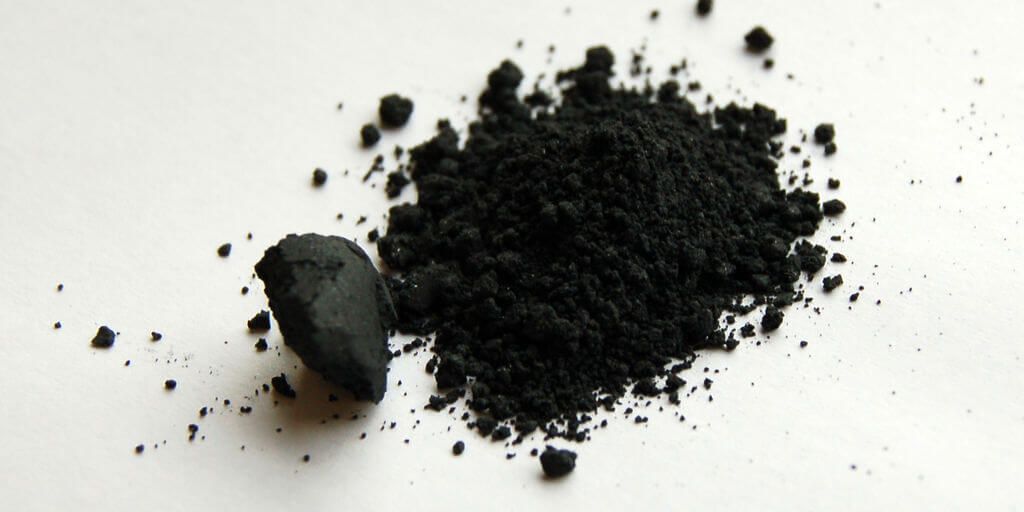Manganese is a chemical element with the symbol Mn and atomic number 25 in the periodic table. It is a hard, brittle, gray-metal that resembles iron. Manganese is essential for many biological processes in living organisms, including metabolism, bone development and antioxidant defence.
In nature, manganese is commonly found in minerals and ores, and it is mined primarily for industrial purposes. It is a hard and very brittle mettle, which is difficult to fuse with other metals, but easy to oxidize.
Manganese is also used in various industrial applications, such as in the production of steel, batteries, and ceramics. Manganese compounds are often used as pigments in paints and dyes.
Manganese is NOT the same element as Magnesium!
Minerals in the Body
Maintaining a health body depends on diet, genetics, disease history and environment. Minerals are key components to life because they contribute to the construction of bones, operation of the nervous system, creation of hormones, repairing tissues and more.
Major dietary minerals include; Calcium, Potassium and Magnesium that we need in large amounts. There are also trace elements, such as; Copper, Selenium and Manganese, that we need in smaller quantities. We use these components to build and maintain our bodies.
Dietary Sources of Manganese
Manganese is found in whole grains, leafy vegetables and tea. Absorption of Manganese is inhibited by ingestion of some foods including; beans, certain seeds, sweet potatoes and cabbage.
Health Benefits of Manganese
Manganese has many health benefits in the body, which we will explore below:
Arthritis, Fibromyalgia and Premenstrual Syndrome: The antioxidant superoxide dismutase (SOD) limits inflammation-related joint damage. Unfortunately SOD levels are depressed in arthritis. In theory manganese would enhance SOD levels. Limited studies suggest that glucosamine, chondroitin, and manganese do reduce pain.
Theoretically the glucosamine-chondroitin-manganese strategy may have validity since people with the chronic pain and fatigue of fibromyalgia appear to have decreased levels of calcium, iron, manganese, and magnesium, based on hair-fiber studies. Moreover, calcium, chromium, copper and manganese blood levels appear depressed in PMS sufferers, but show improvement with a manganese-enhancing diet.
Diabetes: Lower manganese blood levels have been associated with diabetes. In diabetics with higher blood levels of manganese, LDL cholesterol levels were lower, suggesting that manganese has a positive effect on metabolism of lipids in diabetics.
Epilepsy: Lower manganese blood levels have been associated with seizures, but no cause-effect relationship has been established. Based on rodent studies, level of manganese in an organism does not appear related to incidence of seizures or to their severity.
Osteoporosis: Boron, manganese, and vanadium are necessary components of bone building and maintenance. Manganese, when taken with calcium, copper, and zinc appears to inhibit bone loss in the spine in post-menopausal women, a group at risk for osteoporosis. Osteoporosis incidence in both men and women (25% rate and 50% rates, respectively) have bone fragility from the malady sufficient to break bones.
No RDA for Manganese
There is no recommended dietary allowance (RDA) for manganese. An “Adequate Intake” (AI) estimate may serve as a nutrition guesstimate for healthy individuals. Age-specific data suggest a dosage 3 mcg for newborns; 2.3 mg for adult males; and 1.8 mg for adult women, not lactating or pregnant.
Many adults may absorb 11 mg a day without damaging their bodies, but large dosing of manganese brings damaging side effects, particularly when liver function is reduced. Diet and supplemental levels of manganese should not exceed 11 mg a day.
Although diet evaluation is a critical factor to consider when making a decision to augment diet with supplements, the effects of medications (e.g., antacids, laxatives, antibiotics, etc.) must be considered as well since they will affect the absorption of both dietary and supplemental manganese. Suggested dosing in children is considerably below adult levels and the risks are not clearly identified for youngsters.
Inhalation of manganese over longer periods may be associated with tremor side effects. The presence of iron-deficiency anemia may cause greater uptake of manganese. Low fat intake decreases manganese uptake while protein in milk enhances its absorption.
Always take care when taking herbs and Read Our Disclaimer.
Manganese Notes / Side Effects
Drug Interactions
Manganese may inhibit antibiotic absorption in the stomach when supplements are taken immediately after antibiotics. Interaction effects have been found with Chibroxin, Cipro, Noroxin, Penetrex, Raxar, Trovan, and Zagam. Tetracyclines (e.g., Declomycin, Minocin, Achromycin, etc.) require a four-hour wait before manganese may be taken. Researchers suspect manganese interaction effects with anti-psychotics, but definitive data have not been developed. Metabolic uptake for manganese itself is complicated because Calcium, Iron, Zinc and Phytic Acid reduce its absorption.
References
Aschner M, Dorman DC. Manganese: pharmacokinetics and molecular mechanisms of brain uptake. Toxicol Rev. 2006;25(3):147-154.
Das A, Jr., Hammad TA. Efficacy of a combination of FCHG49 glucosamine hydrochloride, TRH122 low molecular weight sodium chondroitin sulfate and manganese ascorbate in the management of knee osteoarthritis. Osteoarthritis Cartilage. 2000;8(5):343-350.
Dobson AW, Erikson KM, Aschner M. Manganese neurotoxicity. Ann NY Acad Sci. 2004;1012:115-128.
Hardy IJ, Gillanders L, Hardy G. Is manganese an essential supplement for parenteral nutrition? Curr Opin Clin Nutr Metab Care. 2008;11(3):289-296.
Muszynska A, Palka J, Gorodkiewicz E. The mechanism of daunorubicin-induced inhibition of prolidase activity in human skin fibroblasts and its implication to impaired collagen biosynthesis. Exp Toxicol Pathol. 2000;52(2):149-155.
Panel on Micronutrients, Subcommittees on Upper Reference Levels of Nutrients and of Interpretation and Uses of Dietary Reference Intakes, and the Standing Committee on the Scientific Evaluation of Dietary Reference Intakes, Food and Nutrition Board, Institute of Medicine: Dietary Reference Intakes for Vitamin A, Vitamin K, Arsenic, Boron, Chromium, Copper, Iodine, Iron, Manganese, Molybdenum, Nickel, Silicon, Vanadium, and Zinc. Washington, D.C.: National Academy Press; 2001;394-419.
Ryan, D. E, Fergusson, J. E., and Holzbecher, J. The sorption of copper(II), manganese(II), zinc(II) and arsenic(III) onto human hair, and their desorption. Science of the Total Environment. 1983;26:121.
Wasserman GA, Liu X, Parvez F, et al. Water manganese exposure and children’s intellectual function in Araihazar, Bangladesh. Environ Health Perspect. 2006;114(1):124-129.


Leave a Reply